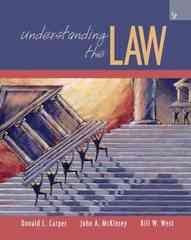Question
Advertising Entry . Consider a market in which a monopoly can advertise its product to increase demand. Total market demand when the monopolist sets price
Advertising
Entry. Consider a market in which a monopoly can advertise its product to increase demand.
Total market demand when the monopolist sets price p and spends A dollars on advertising is equalto ?Q(A,p)=A?/p2? . The monopoly uses a constant unit cost production technology: c(q) = q.
(a)Show that ?Q/?A > 0 and ?Q/?p
(b)Calculate the price elasticity of demand as well as the advertising elasticity of demand.
(c)Show that, at the monopoly's optimum, p* = 2 and A* = 1/64
Now, assume that a regulator is trying to maximize social welfare in this industry. We consider a second-best scenario: in stage 1, the regulator chooses advertising intensity A; in stage 2, the monopolist observes A, and sets price p. Consider stage 2 and assume that the regulator set A in stage 1. Show that, for any A, the monopolist always sets p* = 2 in period 2.
d) Calculate the inverse demand function P (A, Q). Use the inverse demand function to show that consumer surplus is equal to?CS(A)=1/2A??
(e) Show that social welfare is given by?W(A)=3/4(?A)?2?
(f)Calculate the welfare-maximizing level of advertising, AW . How does it compare to A* ?
(g)Interpret this model (the demand function) as one in which there is informative advertising. Is the monopolist providing too much or too little advertising (see you answer to subquestion f)?

Step by Step Solution
There are 3 Steps involved in it
Step: 1

Get Instant Access to Expert-Tailored Solutions
See step-by-step solutions with expert insights and AI powered tools for academic success
Step: 2

Step: 3

Ace Your Homework with AI
Get the answers you need in no time with our AI-driven, step-by-step assistance
Get Started


